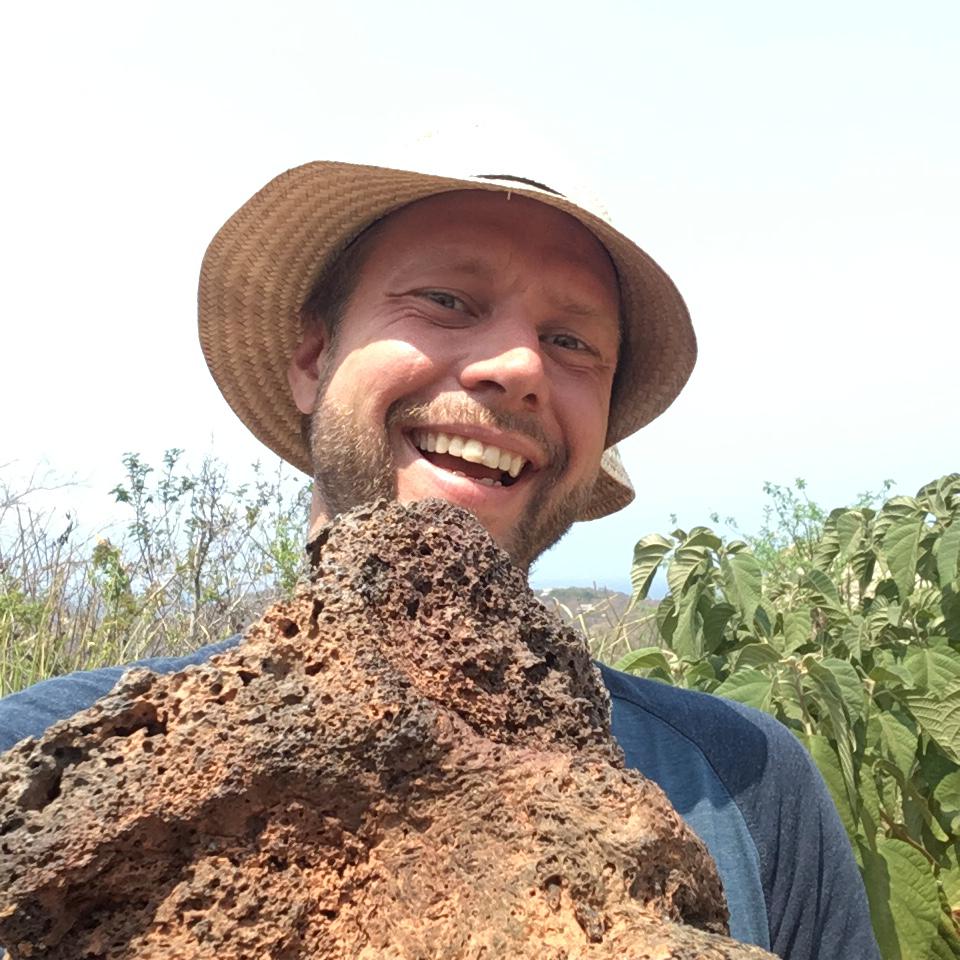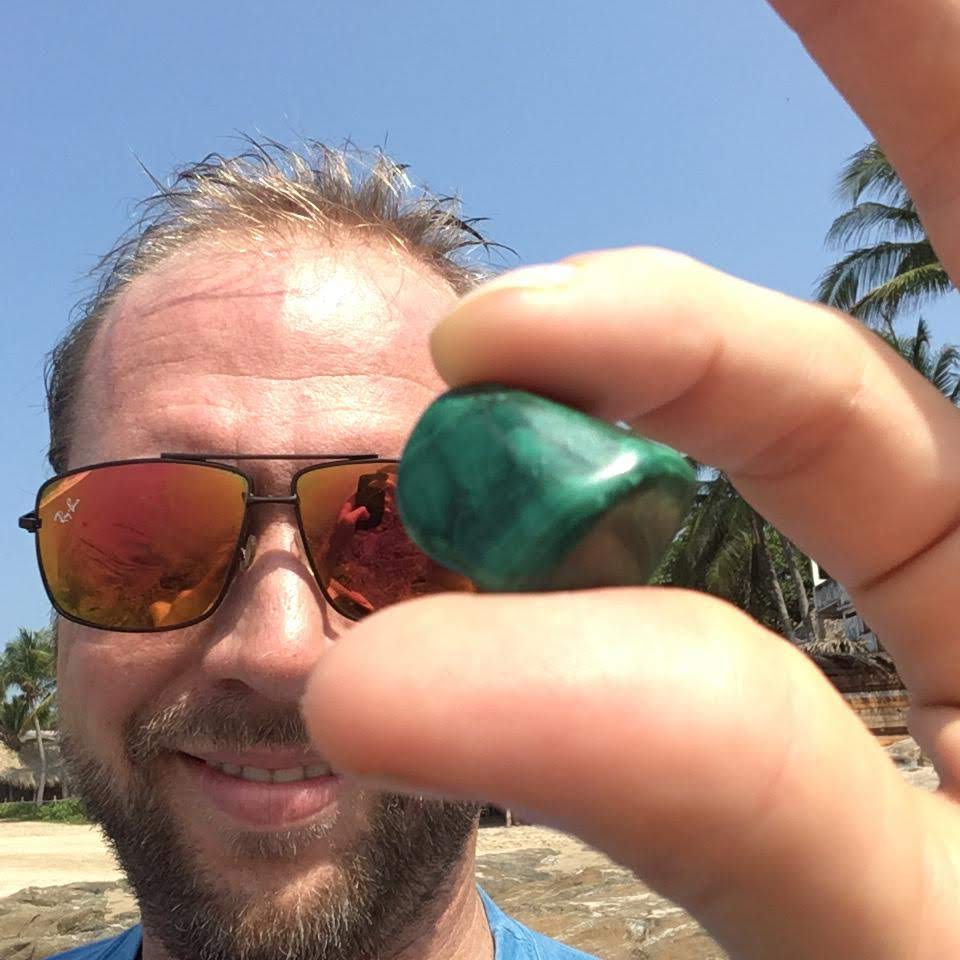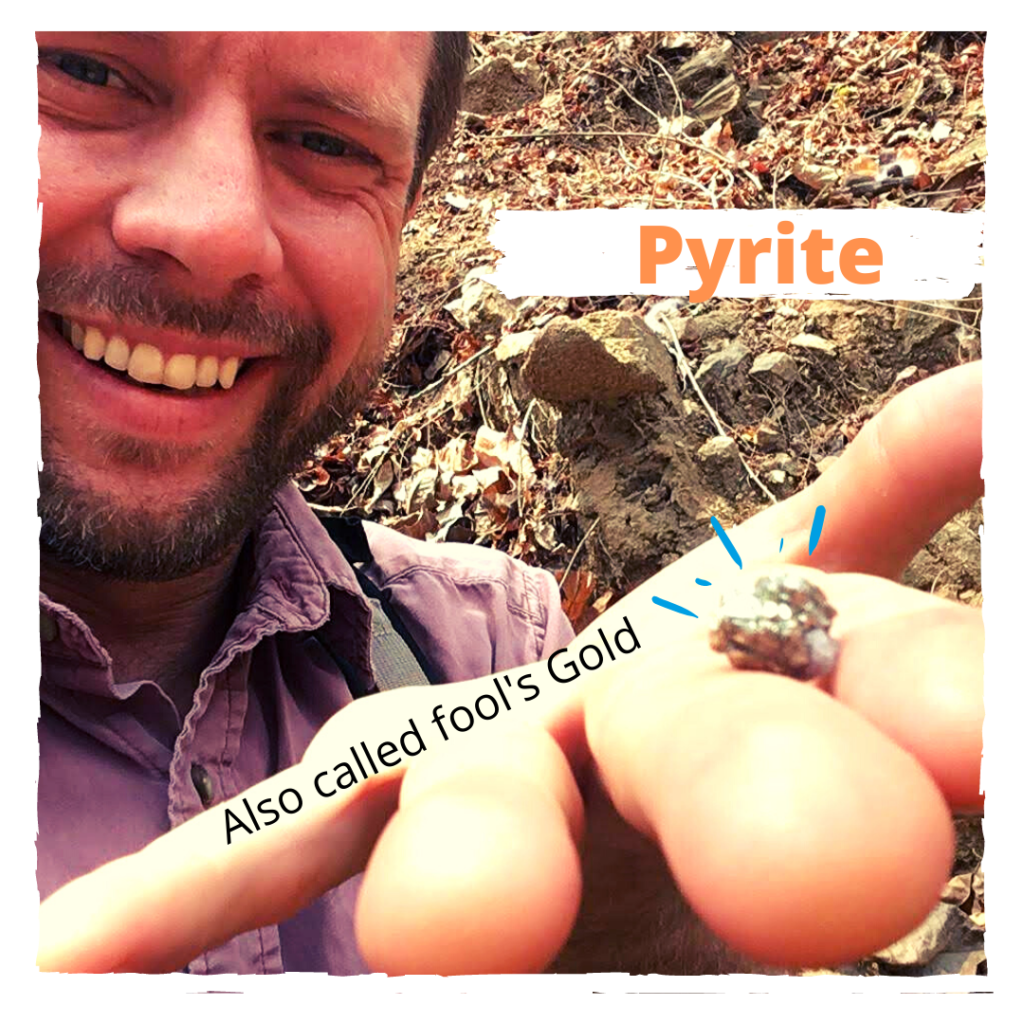Minecraft Emeralds and Ores
Take a virtual field trip with Dr. Scott to learn about the real world properties and uses of the Minecraft ores such as emerald, redstone, obsidian, and bedrock.
A fun game is to make a scavenger hunt out of your favorite ores from the game Minecraft. You can search around the real world for “samples.” Just like in Minecraft, however, some are rare finds. Minecraft emeralds are a good example. Widely believed to be the rarest ore found in Minecraft, they are rare in the real world too. Hence real world emeralds are valuable, just like the Minecraft emeralds.
So you can’t find emeralds or some other ore in the real world? That’s understandable. Yet you can continue your scavenger hunt online to find Minecraft ore pictures, facts, and stories! Not sure where to look? Just scroll down to join Dr. Scott on a virtual field trip of the Minecraft ores.
Minecraft Emeralds
While I have found plenty of Minecraft emeralds, one of my all time favorite real world finds was a few emerald fragments. I encountered them in the Andes Mountains of South America. There are four separate emerald fragments in the three photos below. Two of them are green. Emerald green, you might say. While the other two are decidedly bluish in color. Can emeralds be blue? Then what does emerald green even mean?? Arg.
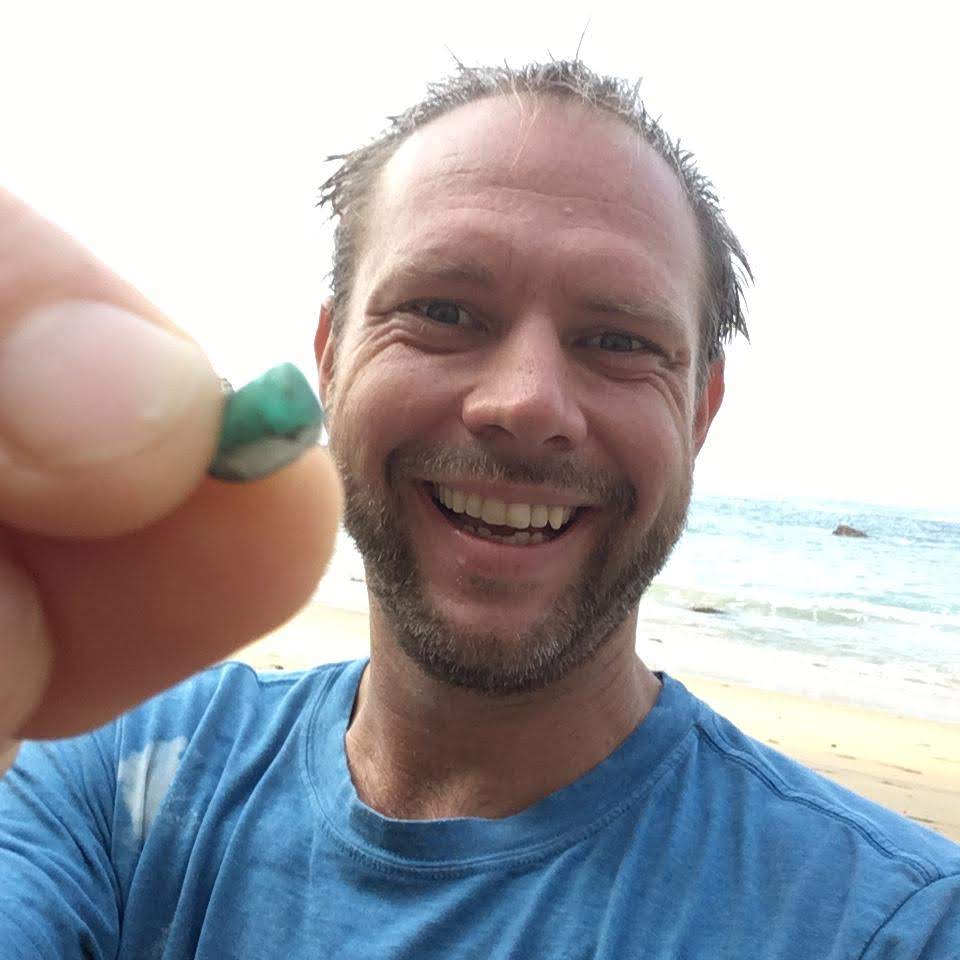
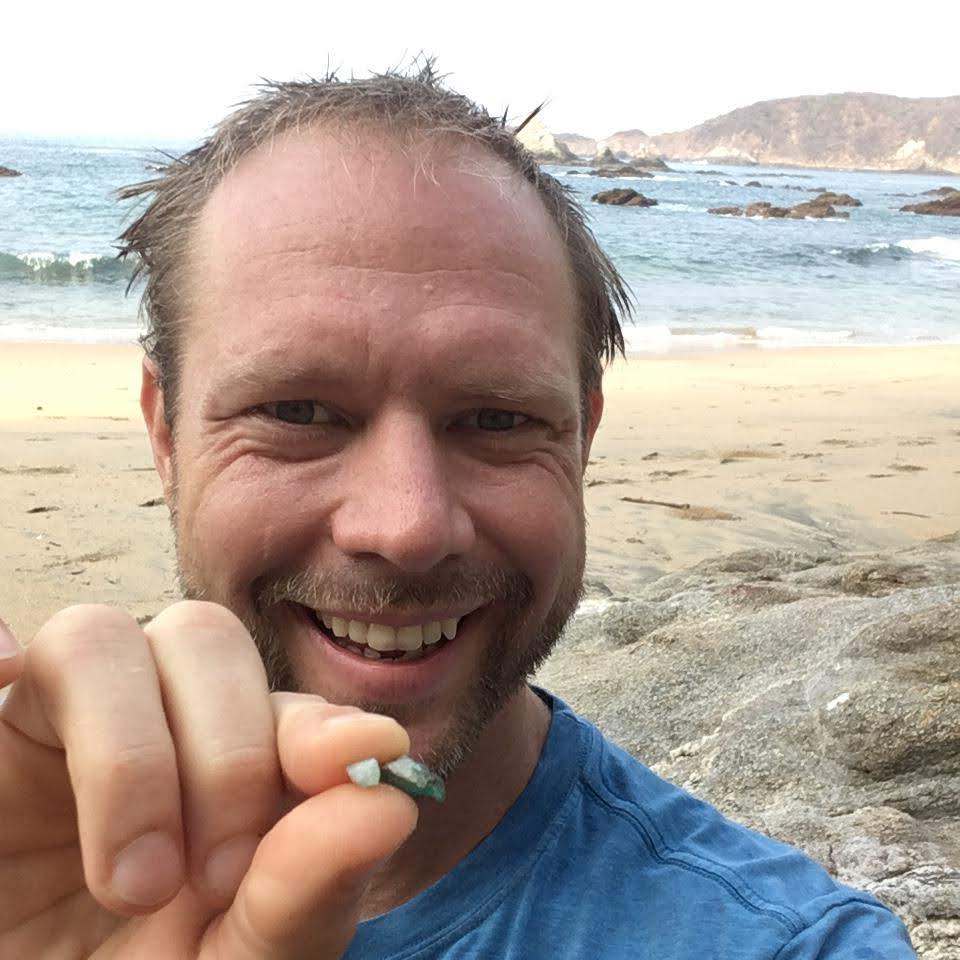
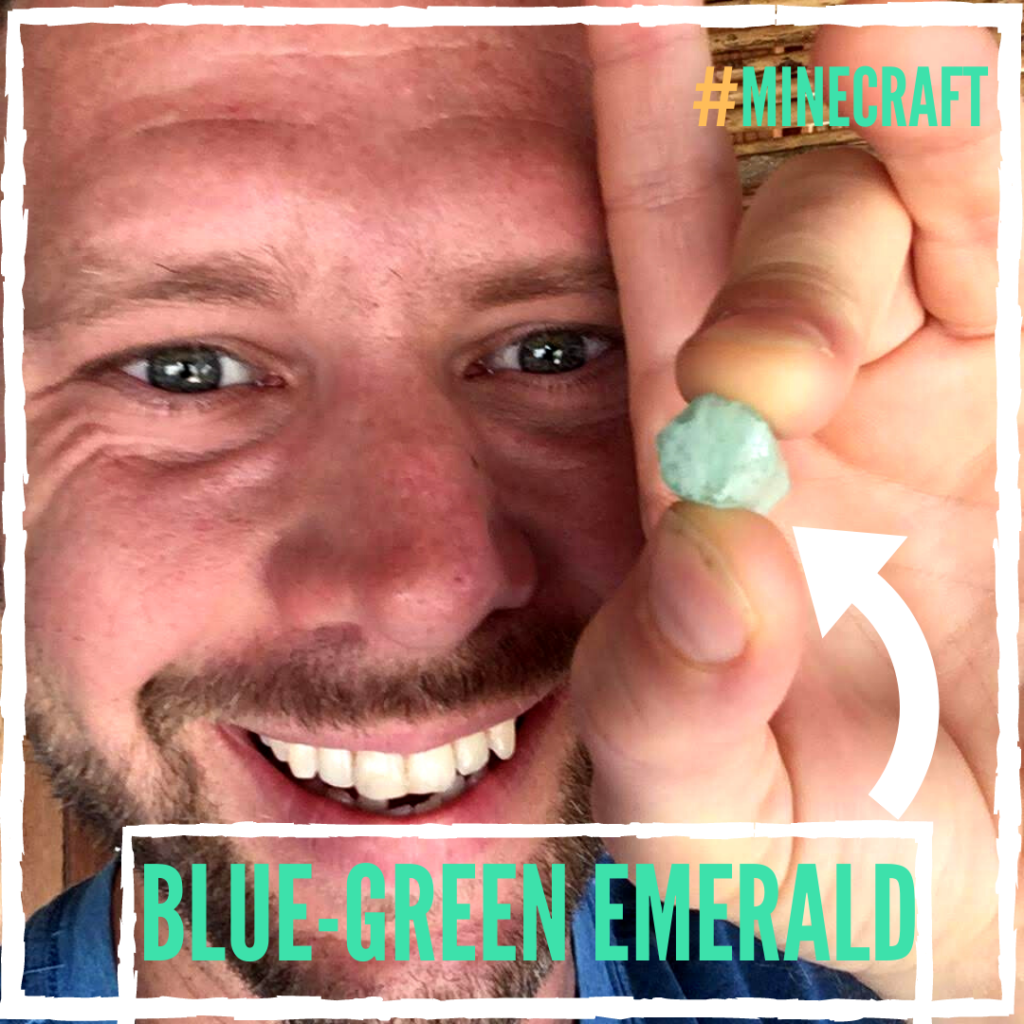
One interesting thing about emeralds, chemically speaking, is that they contain the rare element beryllium. Many people think beryllium provides for the “emerald green color,” but this doesn’t seem to hold up, as emeralds can obviously be blue. It is believed that trace amounts of the elements vanadium (another rare element), chromium, and/or titanium provide for the characteristic emerald green color. Traces of other elements can produce a blue color, and without the trace elements emeralds are apparently clear. Like diamond.
Aside from the rare elements mentioned above, emeralds also contain lots of aluminum, silicon, and oxygen. These three elements are extremely common in rocks, minerals, and gems.
Note the distinct six-sided, hexagonal shape in the cross section. It’s most apparent on the last photo above with the largest, bluest of my fragments. This fragment is large and in its natural form.
The emeralds are unpolished and rough. Emeralds are difficult to polish, as they are around 8 out of 10 on the Mohs hardness scale. A high hardness means they are difficult to polish and grind, because the polishing and grinding must be performed by an even harder material. Such as diamond, which is a 10 out of 10 on Mohs hardness scale.
Steeped in lore and legend, emeralds are May’s birthstone and Cancer’s astrological gemstone, while Minecraft emeralds can be enchanted for a variety of totally practical uses. Especially helping one to find more Minecraft emeralds. And so on.
You can see pictures of the world’s largest emeralds here on wikipedia (at the bottom of the page). Disclaimer: I don’t personally own any of these, as I am extremely content with my four found emerald fragments, haha.
Minecraft Diamonds
While I have found plenty of Minecraft emeralds, I have never found a diamond in the real world. At least not at a store. I thought that maybe I would get one with the Mohs hardness scale testing kit I ordered off Amazon.com, however, as you see, it doesn’t work that way.*
Anyhow, at least I got proof that diamond is really a 10 out of 10… the hardest substance on earth! This means it can cut and grind away at any other substance. Hence the popularity of diamond tipped cutting tools, like drill bits or saw blades, in the real world. Kinda like the diamond pickaxe is the best for mining in Minecraft, as you dig away the layers of the world, all the way down to bedrock.
One other thing about hardness. Diamonds are the hardest material, yet they can and do break. Rather easily, actually. Note that Mohs hardness scale indicates the cutting and grinding ability of substances. The ability to not break, called durability or toughness, is something else altogether. In fact, steel, an extremely tough and durable building material, is only around a 5 on Mohs scale. It is tough but not super hard, and it will bend and not break or shatter like a diamond, which is hard yet brittle.
* (Diamonds are not included, silly. It only cost $20.)
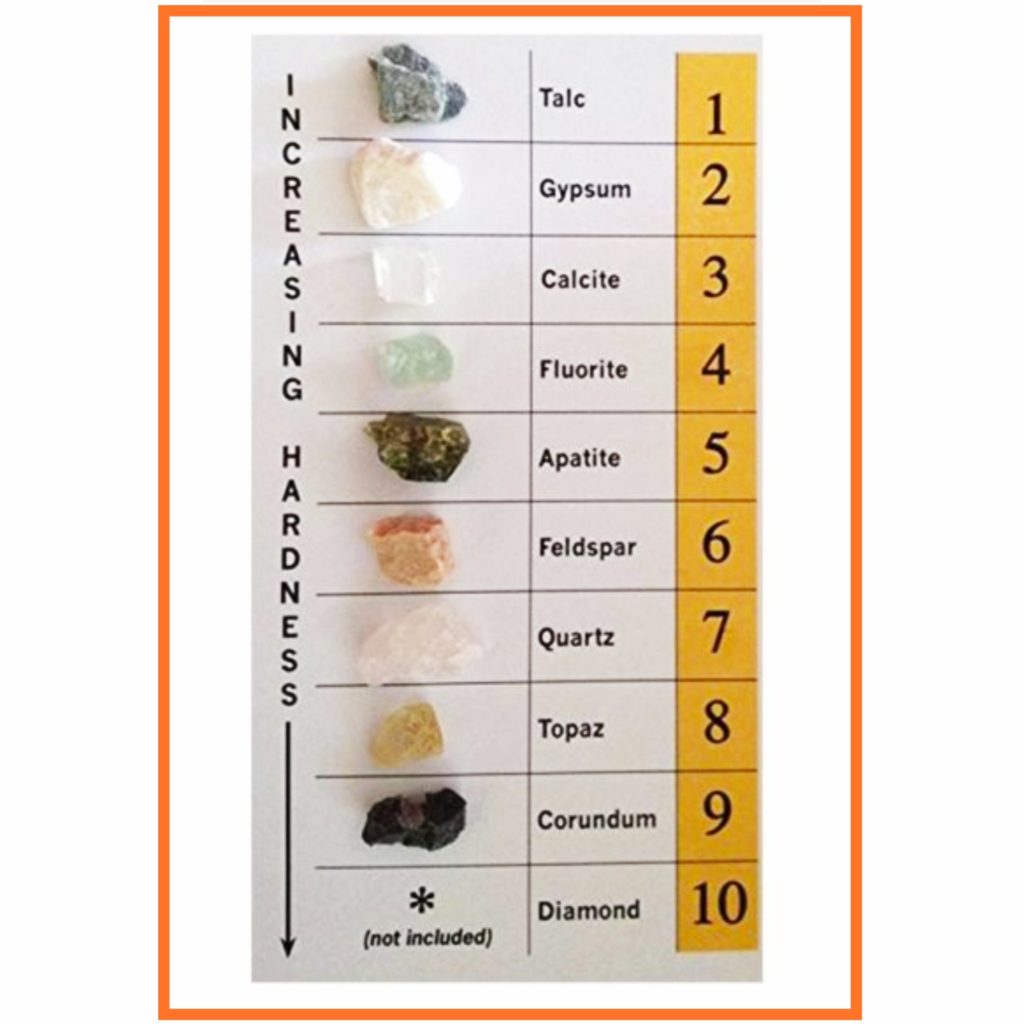
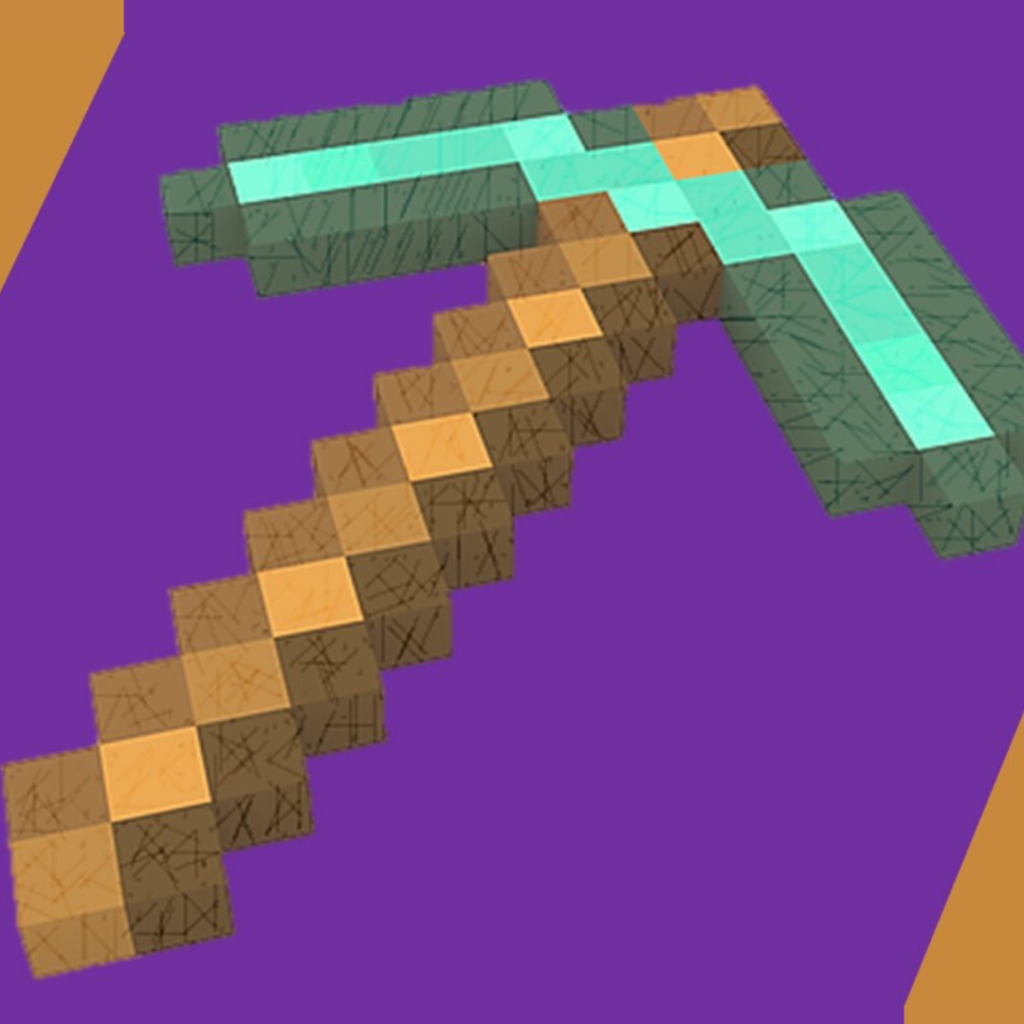
Minecraft Bedrock
Not even the diamond pickaxe can cut through bedrock in Minecraft. How can that be? Is “bedrock” harder than diamond? That cannot be.
First thing, bedrock is not a type of rock. It just means the location where soft, diggable earth ends and the solid rock begins, as one digs downward, presumably toward the center of the world. Bedrock can be any type of rock, and it is often classified as igneous, metamorphic, or sedimentary. In the real world, people routinely dig into the bedrock… when making a solid foundation for a heavy building that would otherwise slowly sink over time.
Minecraft bedrock, then, is not any specific type of ore or mineral. It just represents the bottom layer. As the game needs to stop… eventually. Well, we all know some bedrock busting tricks and mods, don’t we?

This photo shows the layer of bedrock, or solid rock, below layers of earth above.
This bedrock is not very deep, because it is a mountaintop. That’s usually what a mountain is– bedrock pushed up much higher than normal. And rain waters erode away much of the earth and soil on the mountaintop, leaving the bedrock almost exposed at the surface. I found it with just a few feet (about a meter) of digging.
The earth is soft and diggable, comprised of loosely packed soil, sand, pebbles, roots, sticks, ants, etc. The bedrock is solid rock. Yet the bedrock is sandstone and shale, both soft and crumbly rocks, and I can break the bedrock with my bare hands. Some bedrock is hard, some not, yet it’s just the bottom layer of rock underneath where the soil ends.
Minecraft Obsidian
Obsidian is a fun Minecraft addition.
Obsidian comes from volcanoes. As the lava hardness. That’s the scientific explanation for why it’s so awesome. Technically, it’s known as a volcanic glass.
Obsidian is like glass, fairly hard, yet brittle and able to break to produce very sharp edges. Before the days of metal, and even before the days of Minecraft, tribes around the world used obsidian for important cutting tools. Like kitchen knives, hunting devices, and edged weapons.
Obsidian can be black, brown, red, and possibly other colors. It is glassy and sharp in it’s rough, natural form. The picture below shows an obsidian sphere, polished to be super shiny.
Obsidian is found around volcanic regions, like the erupting Popocatepetl Volcano near Mexico City shown below. Millions of Pre-Hispanic and Pre-Columbus-Discovering-America people used this obsidian source. And obsidian was also used for decorations and steeped in their beliefs.
For example, the Aztecs (or Mexica culture) honored Tezcatlipoca, the god of night. He was always depicted with an obsidian mirror, which was used as a portal to other dimensions, timelines, and places.
The Aztecs apparently knew how to use common quartz, Mohs hardness 7, to polish and smooth obsidian, Mohs hardness 5. That is, they understood how to use relatively harder materials to shape relatively softer materials. How else could they come up with such a useful invention as the highly polished, obsidian mirror? Portal me to the Nether, please, so we can find more quartz to polish more obsidian mirrors… And so on.
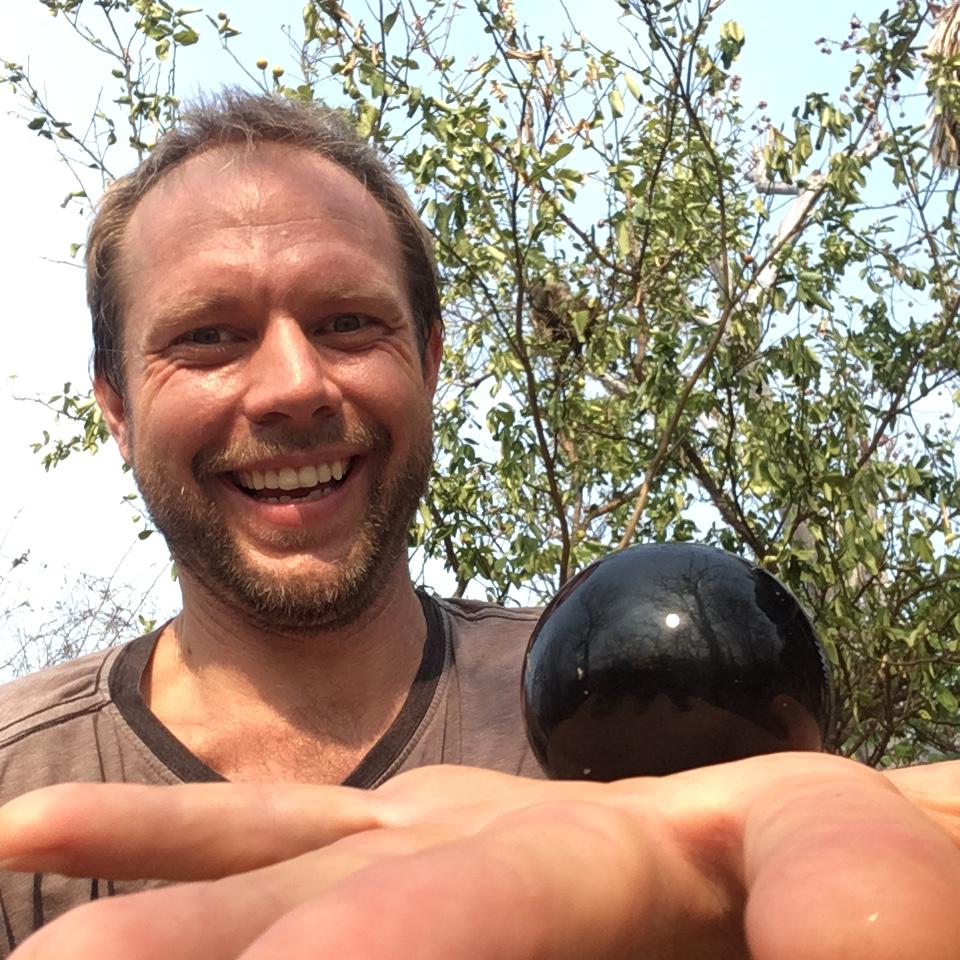
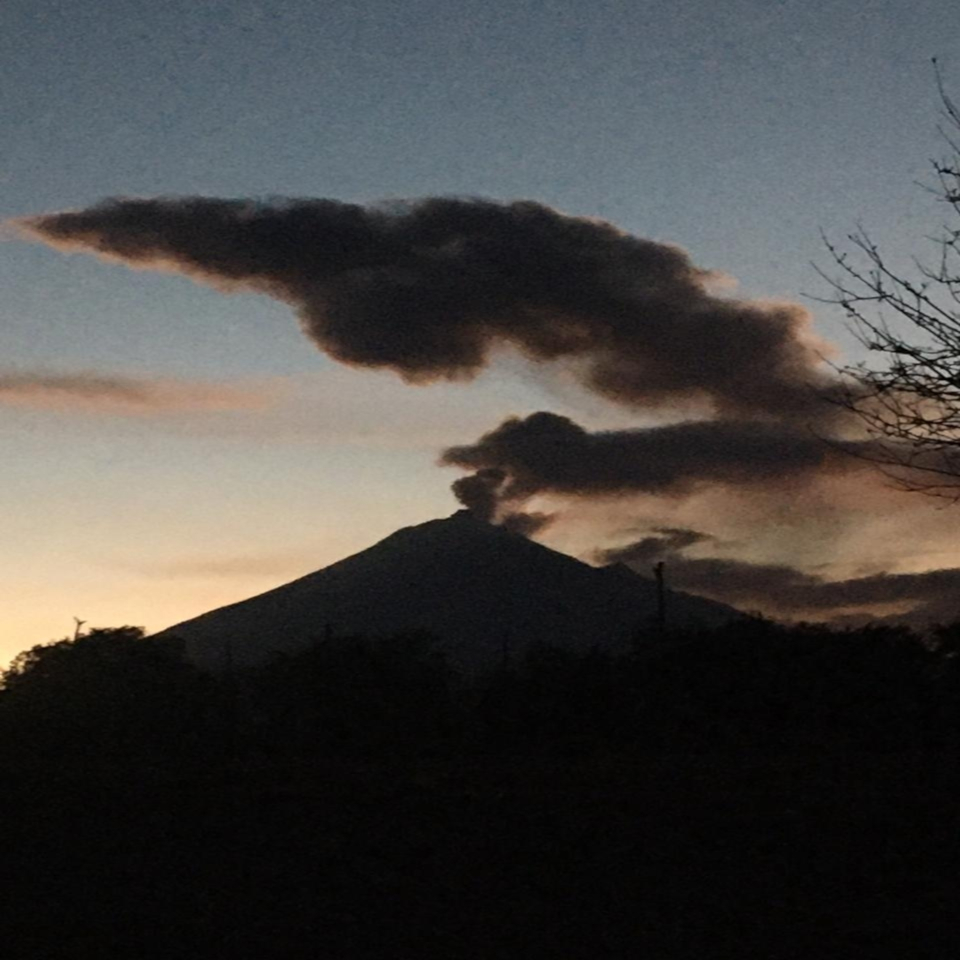
Minecraft Quartz
Minecraft quartz may be found in the dangerous Nether, yet here on planet Earth it is really, really common stuff.
Quartz can appear as large clear crystals (first images below). Purple quartz is called amethyst (center photo). Quartz can also be white, such as the quartz layer in the rock in the second to last photo. There’s also lots of quartz under me in the last photo, with the shark tooth… as much of the world’s sand has a lot of quartz in it, pulverized into small crystals by the waves over time.
Minecraft quartz can make an attractive exterior to your favorite base or building, much like tall buildings in the real world are covered with glass windows. In fact, glass is made from quartz contained in sand. Can you see how the clear quartz, especially in the first photo, is totally transparent, just like glass?
Super high purity quartz is also used to make computer chips, which are printed on pure silicon. Quartz sand is made from just two elements, silicon and oxygen, and sometimes we call this sand “silica.” At incredibly high temperatures, the pure silicon is released from the silica (sand). So you might say that quartz is an important ore in the modern world… silicon ore.
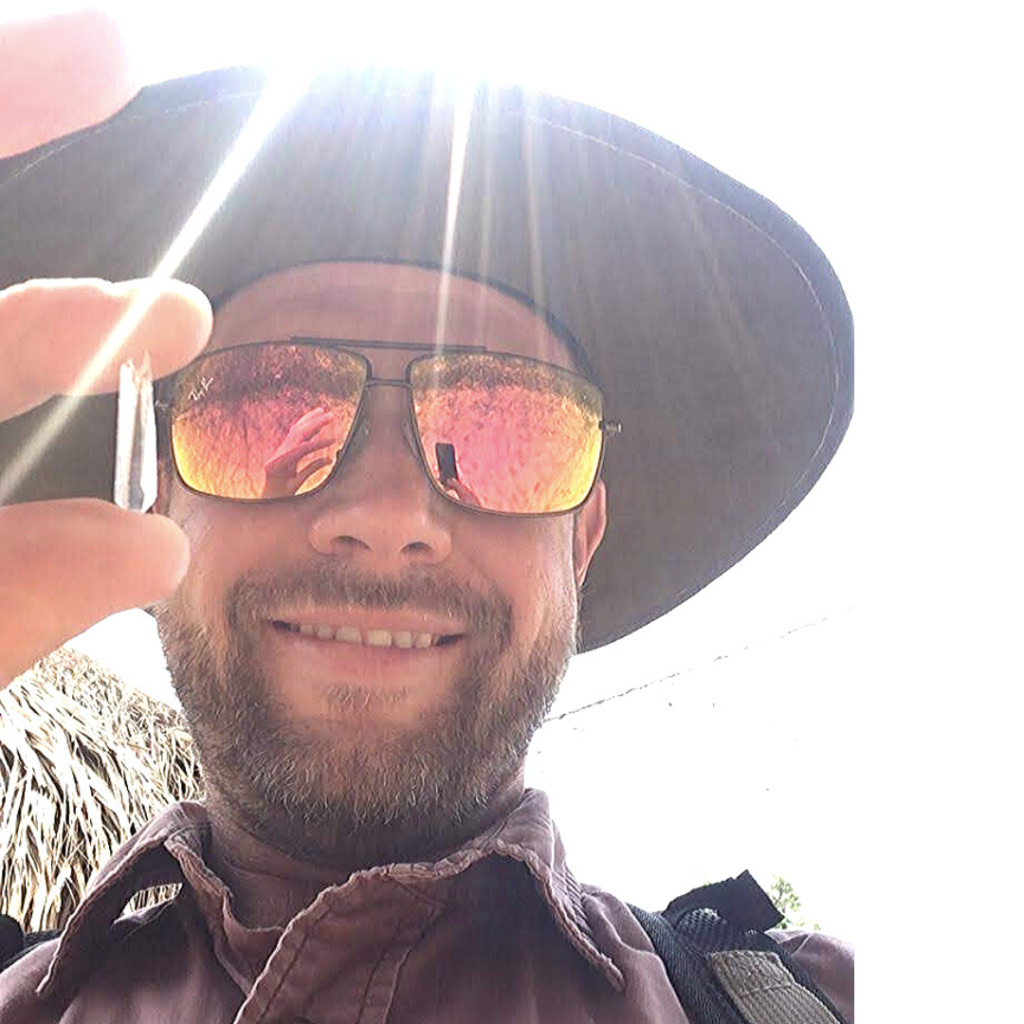
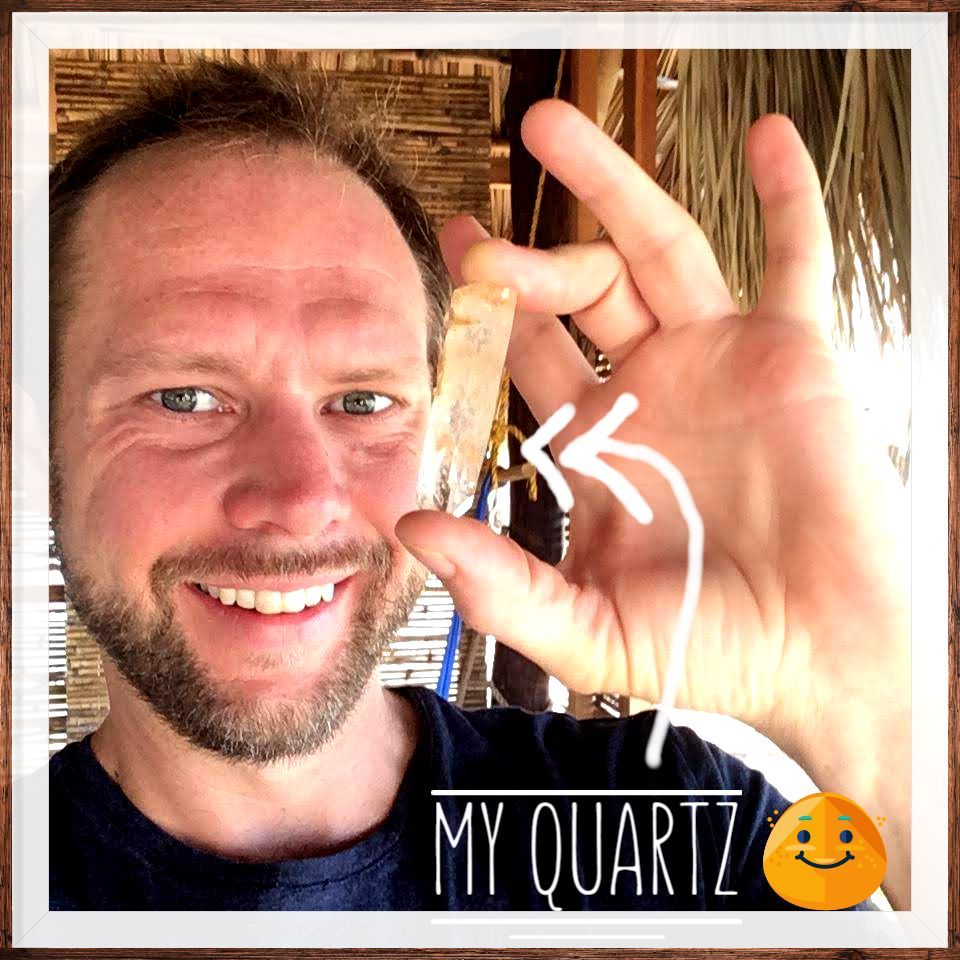
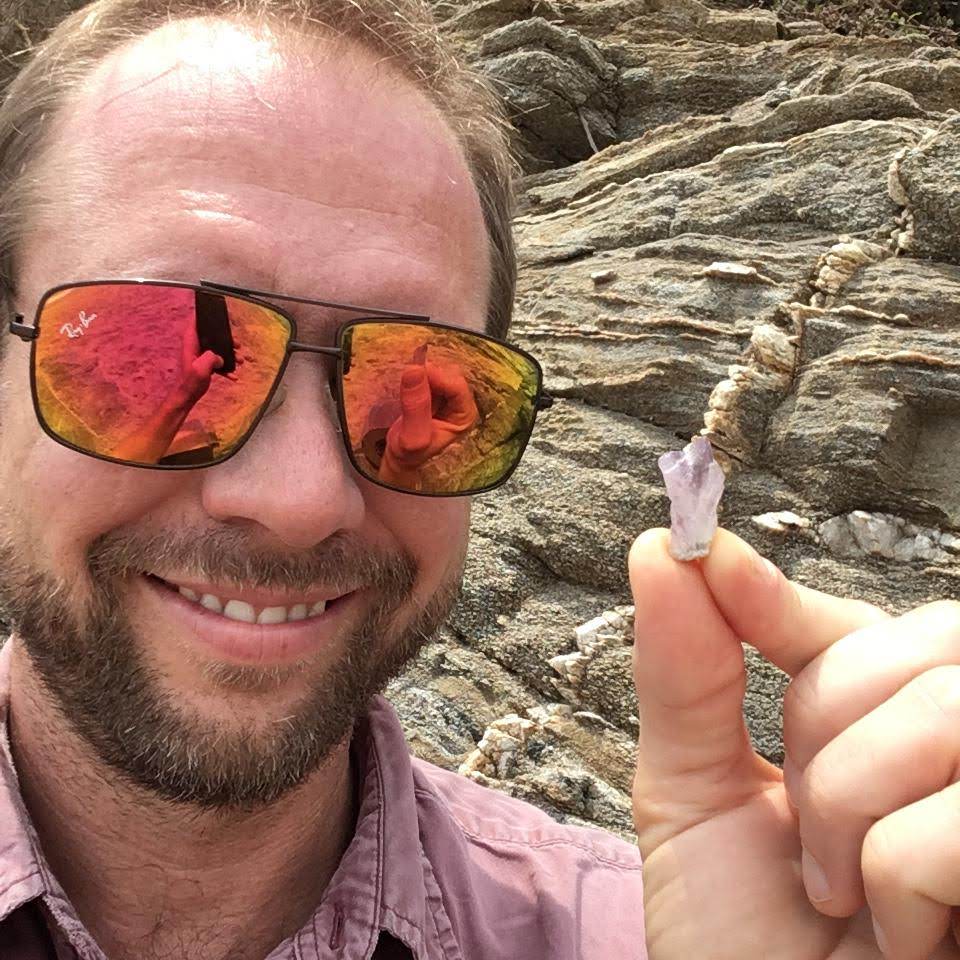
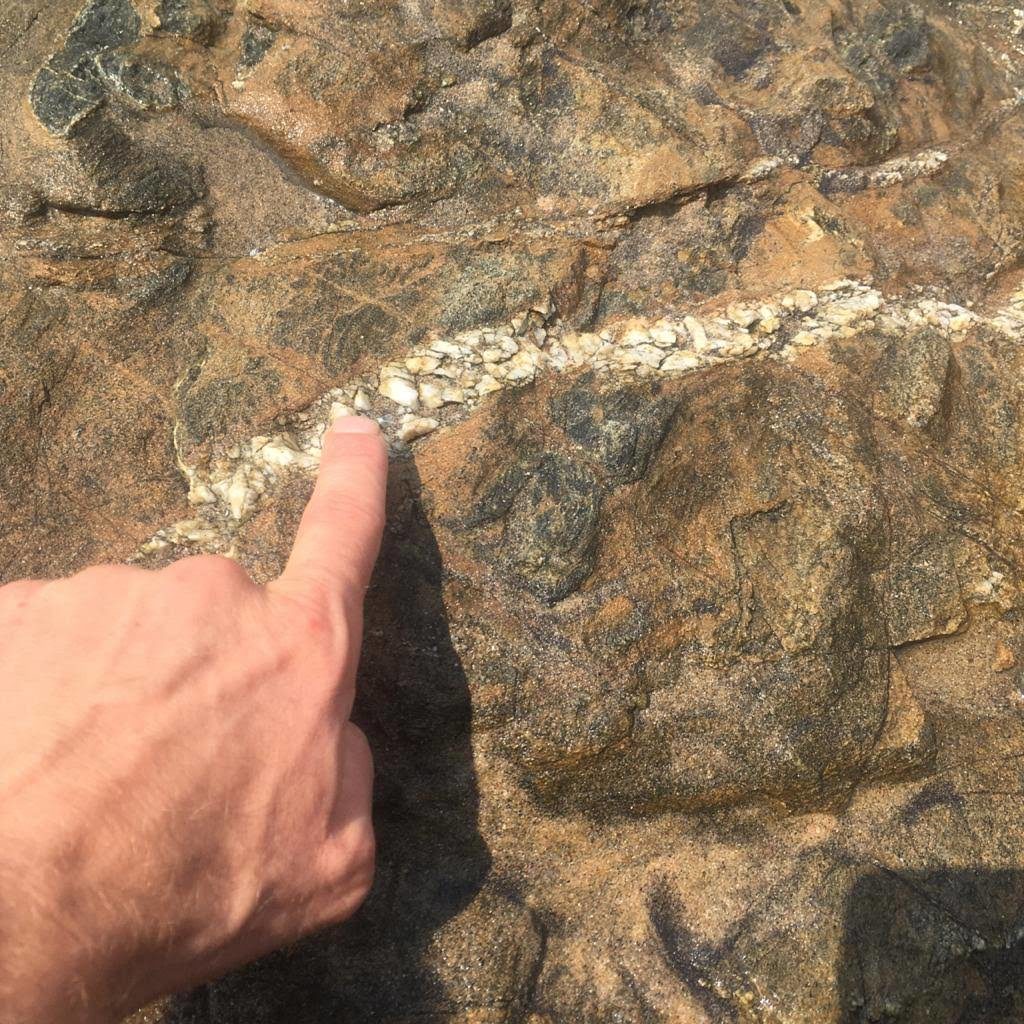
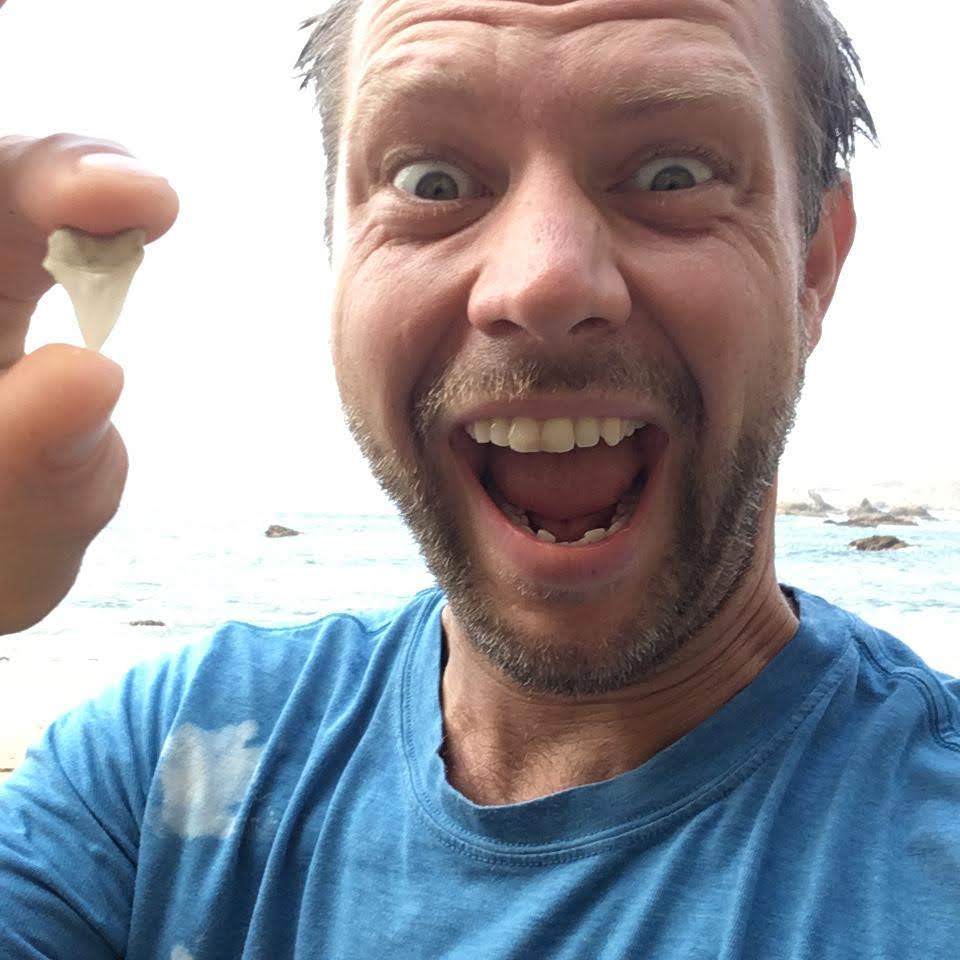
Minecraft Iron, Copper, and Gold Ore
Minecraft metal ores require smelting to release the pure metal from the ore, which contains the metal but also impurities.
The first photo shows some lava rock containing iron. You can tell there is iron because it’s red, and also it’s attracted to a magnet. The iron was mixed into the lava deep in the Earth, where there is lots of iron. The eruption then brought it to the surface. This wouldn’t be a very good iron ore, practically, though. It’s just fun to play with lava… not the liquid kind, though;)
The center photo is an ancient copper ore. Copper ore is green, and there are various green rocks containing smeltable copper. This cube, which has been polished, is called malachite. We have better and less beautiful copper ores in the modern world.
Fooled you the last one isn’t gold, haha. Pyrite, or fool’s gold, is actually made of iron and sulfur. Not gold. So perhaps it could really be an iron ore?
